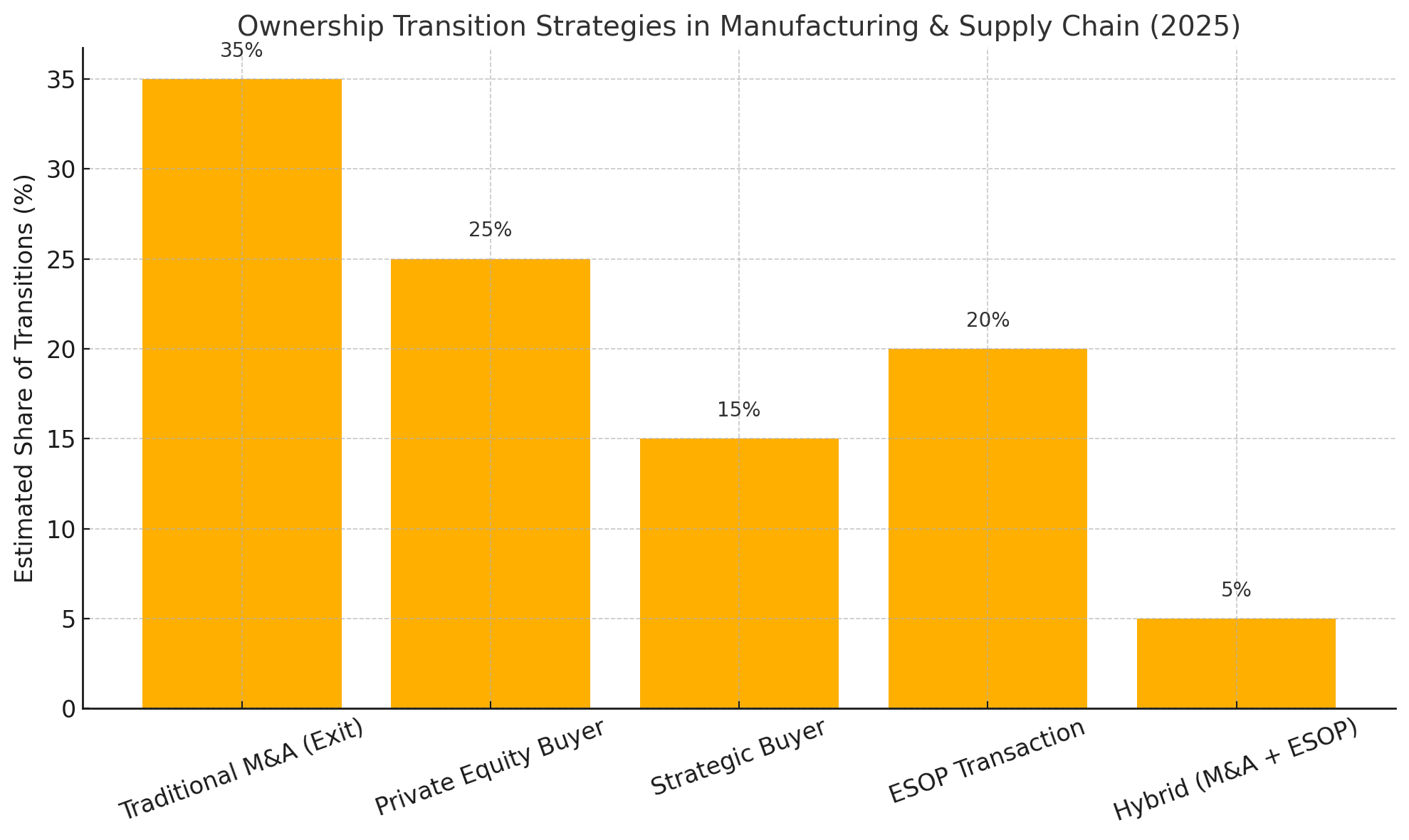Understanding the Shift in Ownership Models
In recent years, the logistics sector has entered a transformative era with two ownership transition strategies gaining prominence: strategic mergers and acquisitions (M&A) and employee stock ownership plans (ESOPs). These approaches not only serve growth objectives but also address founder succession issues, generational shifts, and liquidity needs. Owners aiming to maintain their legacy while incentivizing their workforce have increasingly turned to ESOPs, finding them a viable alternative to traditional sales.
The Rise of M&A: Aiming for Resilience
By 2024, M&A activity soared in the manufacturing sector, experiencing a notable 5% increase and totaling $160 billion in deal value. This rise reflected a significant pivot; many business owners opted for M&A as a means to exit rather than expand. Private equity firms and strategic buyers have taken a keen interest in acquiring mid-sized, founder-led firms known for strong customer relationships, operational expertise, and established reputations.
In the bustling sectors of supply chain and industrial services, succession planning has emerged as a critical catalyst for M&A transactions. With numerous founders gearing up for retirement and limited internal succession alternatives, selling to private buyers or private equity-backed platforms offers a path to liquidity while often raising concerns about team retention and brand integrity.
Private Equity’s Dominance
Private equity (PE) investors have been behind nearly 60% of all supply chain transactions towards the end of 2024. They are pursuing buy-and-build strategies with a keen appetite for acquiring specialized, profitable operations across logistics, distribution, and contract manufacturing sectors.
ESOPs: Supporting Legacy Through Employee Engagement
In contrast, ESOPs have found an especially warm welcome in the logistics and manufacturing sectors. This unique selling proposition—offering a tax-efficient way to sell while fostering employee ownership—enables founding owners to preserve company culture and ensure operational continuity. Indeed, manufacturing accounts for 21% of all ESOP companies and holds a staggering 42% of total assets among these firms, firmly establishing it as the leading industry for this model.
With a robust ESOP structure, business owners can provide a path that rewards employees, enhances engagement, and can lead to better long-term performance—an increasingly valuable trait in industries grappling with labor shortages and margin pressures.
The Merge of M&A and ESOPs
Interestingly, hybrid approaches are on the rise—some business owners opt to sell a minority stake via ESOP while simultaneously pursuing outside capital or strategic acquisitions. This blended strategy can furnish liquidity, retain talent, and secure growth capital without relinquishing complete control.
Proactive Planning as Key to Success
For both M&A and ESOP options, the spotlight shines brightly on planning. Owners who procrastinate until their retirement might miss out on favorable terms. Whether transitioning to external buyers or making internal shifts, a proactive approach bolstered by valuation expertise, tax planning, and strategic insights can yield significantly improved results.
对物流业的影响
The ownership transitions happening in manufacturing and supply chains aren’t merely trends—they’re sculpting the future of the logistics sector itself. With more founders contemplating retirement, the decisions made now will shape their companies in the years to come. ESOPs, though previously viewed as niche, offer practical solutions for founders who place high value on continuity and culture, while ownership combinations often yield the best of both worlds.
Planning for Transitions: Awareness is Key
Ownership transitions come in all shapes: whether it’s a third-party sale, an ESOP, or a hybrid approach, these complex decisions hold significant long-term implications for both the owners and their businesses. Hence, seeking guidance from qualified advisors can make a substantial difference in how these decisions are structured and executed. Engaging in early conversations allows the advisory team to objectively evaluate options and help navigate the ins and outs of this intricate transition process.
Conclusion: GetTransport.com – Your Reliable Partner in Logistics
The world of logistics is changing rapidly, and understanding the nuances of ownership transitions through M&As and ESOPs is pivotal for future success. Even the most insightful reviews cannot substitute for personal experience and careful planning. On GetTransport.com, users can arrange for global cargo transport at unparalleled prices without breaking the bank—empowering you to make informed logistical decisions. The platform offers convenience, affordability, and a plethora of options, aligning perfectly with your transportation needs, whether it’s a house move, bulky deliveries, or commercial shipments. Make logistics seamless with GetTransport.com: Book your transport solutions today! GetTransport.com.

